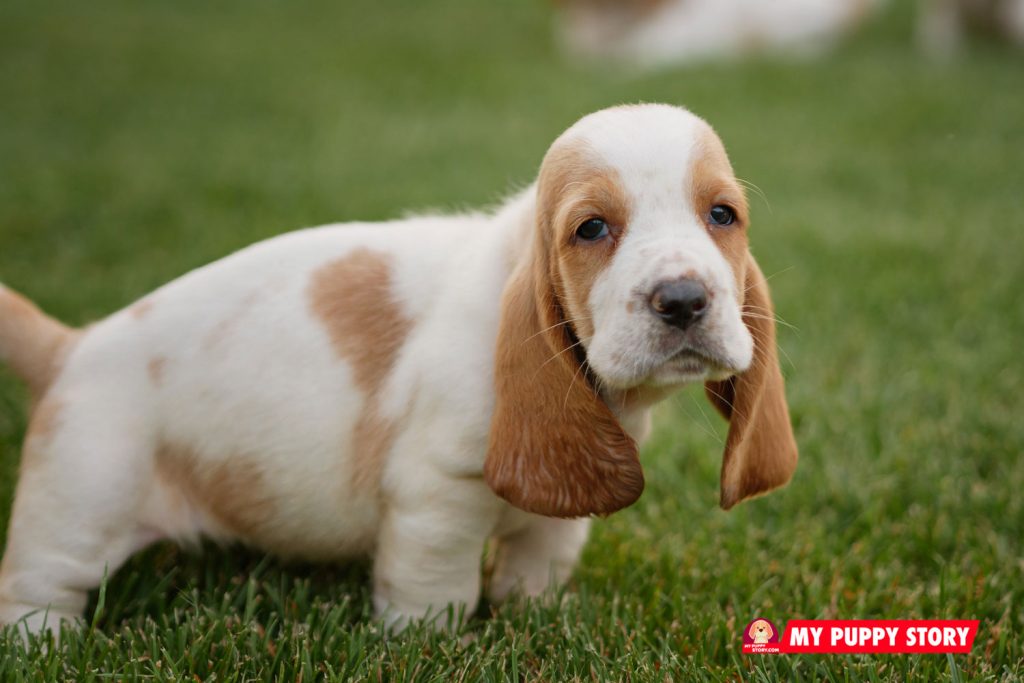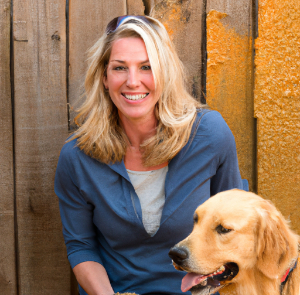
Basset hounds are slow to mature mentally and are notoriously slow to house train. But once they have it, they don't forget it. The pup will give its owner signs when it needs to relieve itself, a chance for the owner to spot them, pick the pup up and take it outside to go to the toilet in the proper place. The signs to look out for are:
Good Practice for Encouraging a Pup to Relieve Itself in the Correct Place
Every time the pup wakes up, after eating and drinking and after playing are all key times when an owner can set up the routine of letting the dog out to encourage it to relieve itself in the correct location, outside rather than in the house. Even if it doesn't relieve itself to start with, it will soon get used to the process of going outside and with regular positive reinforcement the pup will start to do this itself.
An 8 - 10 week puppy is unable to control its bowels and bladder all night so expect accidents and put down plenty of newspaper outside its bed so that any mess can be easily cleared up. During the day it is an idea to put newspaper down by the door through which the pup will go out, then if the pup doesn't make it completely outside it will soil the newspaper. If the time of year allows, leaving the door open will encourage the pup to let itself out. However, owners need to be on the lookout, when the weather cools because the door will be closed and the pup will ask to go out.
Punishment doesn't help house training, particularly if the reason the pup messes inside is because no one is there to let it out. With the best will in the world, mistakes are going to happen and if absences are likely to be flexible, a dog-flap might be an option.
Socialisation and Separation Training of Basset Puppies
Basset hounds are pack-animals who don't do well alone. They love people and should be socialised at between 8 to 12 weeks of age. A basset pup can be very sensitive and impressionable so must feel safe and protected during the training.
Although owners spend a lot of time with their puppies, there are times when it must be left alone. A suggested method for preparing the puppy for separation is:
In time, the puppy will realise its owner will only return when it is quiet and not when it's making a noise. Leaving a radio on in the background will provide comfort or giving the pup a piece of old clothing that has retained the owners smell will help to reassure it.
Training a Basset Puppy to Walk with Collar and Lead
Basset puppies tend to take to a collar and lead quite quickly, but the following tips may help speed up the process:
It is important to give plenty of praise to the puppy and it's worth keeping the training sessions short. It's much more effective to carry out several short sessions during the day, if possible, rather than one long one which will tire both pup and owner and try the patience. If there is an older dog which walks steadily on the lead it will be easier to train the new puppy as it will normally happily trot alongside its kennel mate.
There are hundreds of websites selling products for dog care and training, but one item that is recommended by breeders and trainers is a nylon collar, adjusted with 2 buckles, interlinked with a small circle of chain, with a ring onto which the lead is clipped. If it is adjusted correctly the collar will fit nicely, but if the puppy pulls or tries to escape, the collar will tighten to facilitate control, safely and securely.
Due to the terrific growth rate of young basset hounds there is a huge pressure on the puppies' ligaments, muscles and bone development, so it is recommended to avoid long walks with a young dog up to 6 months of age. With this in mind, it might be worth carrying out the collar and lead training in the garden or a restricted place where the puppy isn't tempted to walk too far.
